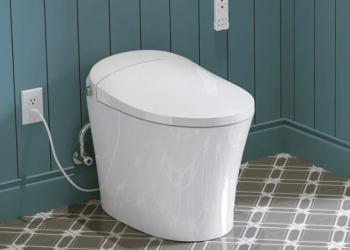When it comes to publishing your work in a professional, high-quality format, hardcover book printing stands out as the preferred option for many authors and businesses. Whether you’re producing a novel, a coffee table book, or a company report, hardcover books not only offer durability but also a sense of prestige that softcover books simply can’t match. In this blog, we will explore the benefits, process, and factors to consider when choosing hardcover book printing for your next project.
The Appeal of Hardcover Books
Hardcover books have long been seen as a symbol of quality. They offer superior durability, which means your book will last longer and maintain its pristine condition over time. This makes them an ideal choice for books that are meant to be cherished, displayed, or kept as collectible items.
Moreover, hardcover books provide a premium feel that resonates with readers. The tactile experience of holding a sturdy book with a beautiful dust jacket or a cloth-bound cover adds to its overall appeal. If you’re self-publishing, your choice of hardcover can help you stand out in a crowded market and position your work as something special.
Benefits of Hardcover Book Printing
- Longevity and Durability
One of the most significant benefits of hardcover book printing is its lasting power. Unlike paperbacks, which can bend, tear, and wear out over time, hardcover books are built to withstand years of use. The thick, protective covers keep the pages safe, making them perfect for books that are likely to be referenced or displayed for a long time. - Professional Aesthetic
Hardcover books exude a sense of professionalism and sophistication. If you’re looking to present your work in a way that conveys authority and attention to detail, hardcover printing is the way to go. The rigid cover can also be designed with intricate artwork or embossing that makes a striking impression on potential readers. - Perfect for Special Editions
If you’re planning to release a special edition of your book, hardcover printing is an obvious choice. Limited runs with personalized designs, autographed editions, or books with high-quality images often make use of the hardcover format to enhance their exclusivity and luxury feel. - Higher Perceived Value
For authors or businesses looking to sell their books, the hardcover format often commands a higher price. Readers and buyers are more willing to pay a premium for the tactile and aesthetic qualities that hardcover books offer, which can boost your overall sales. - Great for Gift Giving
Hardcover books make for excellent gifts. Their solid construction and elegant appearance make them ideal for presenting as gifts for holidays, birthdays, or special events. Whether you’re an author gifting a signed copy or a business giving away a branded book, hardcover editions have a special charm.
The Hardcover Book Printing Process
When opting for hardcover book printing, it’s essential to understand the process involved. Here’s a basic breakdown:
- Design and Layout
Before the printing process begins, you must finalize the design of your book. This includes page layouts, cover design, and ensuring that the book’s dimensions and color settings are correct. A professional design can significantly impact the final look of your book, especially with a hardcover format. - Printing
The printing process for hardcover books involves printing the pages first (either digitally or through offset printing). Once the pages are printed and assembled, they are bound together. The binding is the key part of the process that ensures the pages are securely attached to the cover. - Cover Construction
The cover is then made, typically using thick cardboard, and is wrapped in a printed jacket or cloth. For some hardcover books, the cover might include special elements such as foil stamping, embossing, or a dust jacket with a unique design. - Finishing Touches
Once the cover and pages are bound, additional finishing touches such as spot UV coatings, lamination, or matte finishes can be applied to enhance the visual appeal of the book. These features can also add to the overall durability of the book.
Things to Consider Before Choosing Hardcover Book Printing
- Budget
While hardcover books are an excellent investment for many projects, they tend to be more expensive than softcover books due to the materials used and the more complex printing process. If you have a tight budget, it’s important to consider whether the additional cost is worth the value for your specific project. - Quantity
Hardcover book printing often becomes more cost-effective when you print in bulk. Printing smaller quantities may result in a higher per-book cost, so it’s essential to calculate how many books you plan to print and how that fits into your budget. - Target Audience
Who are you publishing for? If your target audience values durability and premium presentation, then hardcover book printing is a great choice. However, if your target audience is more price-sensitive, you might want to consider a different format or offer both hardcover and paperback versions. - Book Type
Consider the nature of your book when deciding on hardcover printing. Books like children’s books, art books, and photo books tend to benefit the most from a hardcover format due to their rich visual content and need for durability. On the other hand, novels or light reading materials might be better suited to a paperback format.
Final Thoughts
Hardcover book printing is a powerful option for those looking to create a lasting impression with their books. Whether you’re a self-published author, a business, or an artist, opting for a hardcover can elevate the perceived value of your work and ensure its durability for years to come. However, it’s crucial to consider your budget, target audience, and the type of content you’re publishing to make the right decision for your specific project.
If you’re ready to take your work to the next level, consider investing in hardcover book printing for a quality product that stands the test of time.











